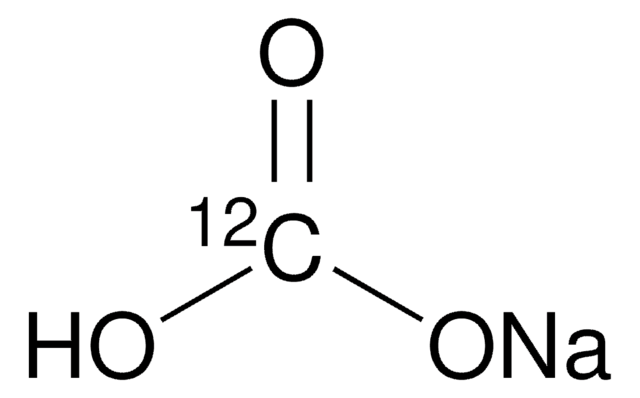Key Documents
1613655
USP
Sodium bicarbonate
United States Pharmacopeia (USP) Reference Standard
Synonim(y):
Sodium hydrogen carbonate
About This Item
Polecane produkty
klasa czystości
pharmaceutical primary standard
rodzina API
sodium bicarbonate
producent / nazwa handlowa
USP
pH
8.3 (0.1 molfreshly prepared)
pKa (25°C)
(1) 6.37, (2) 10.25 (carbonic acid)
gęstość
2.16 g/mL at 25 °C (lit.)
Zastosowanie
pharmaceutical (small molecule)
format
neat
ciąg SMILES
[Na+].OC([O-])=O
InChI
1S/CH2O3.Na/c2-1(3)4;/h(H2,2,3,4);/q;+1/p-1
Klucz InChI
UIIMBOGNXHQVGW-UHFFFAOYSA-M
Szukasz podobnych produktów? Odwiedź Przewodnik dotyczący porównywania produktów
Opis ogólny
Zastosowanie
Komentarz do analizy
Inne uwagi
Kod klasy składowania
13 - Non Combustible Solids
Klasa zagrożenia wodnego (WGK)
WGK 1
Temperatura zapłonu (°F)
Not applicable
Temperatura zapłonu (°C)
Not applicable
Certyfikaty analizy (CoA)
Poszukaj Certyfikaty analizy (CoA), wpisując numer partii/serii produktów. Numery serii i partii można znaleźć na etykiecie produktu po słowach „seria” lub „partia”.
Masz już ten produkt?
Dokumenty związane z niedawno zakupionymi produktami zostały zamieszczone w Bibliotece dokumentów.
Klienci oglądali również te produkty
Protokoły
Protocol for 1000 mg/L sulfate in water
Nasz zespół naukowców ma doświadczenie we wszystkich obszarach badań, w tym w naukach przyrodniczych, materiałoznawstwie, syntezie chemicznej, chromatografii, analityce i wielu innych dziedzinach.
Skontaktuj się z zespołem ds. pomocy technicznej







